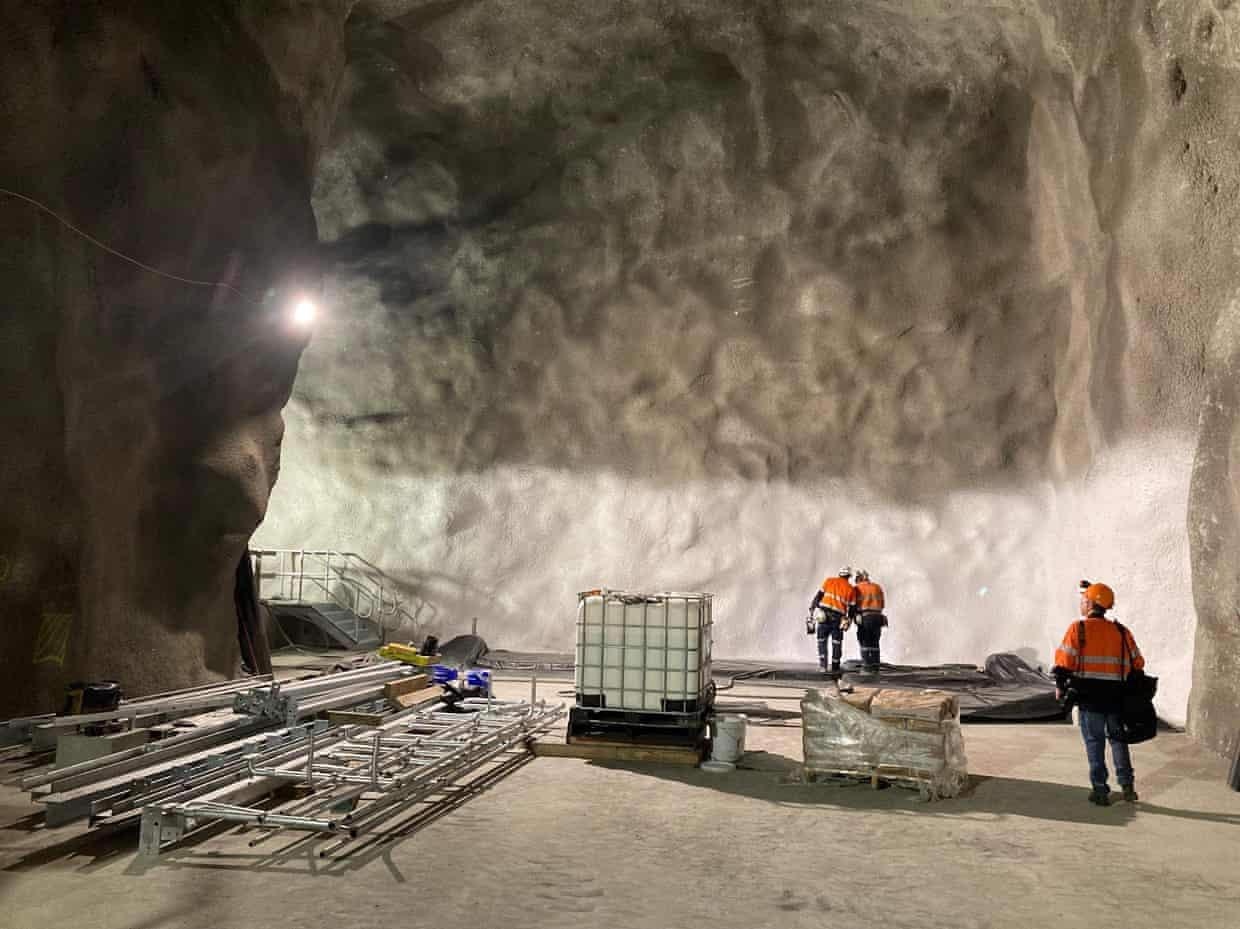AZoQuantum speaks with Professor Elisabetta Barberio from the School of Physics at The University of Melbourne. Professor Barberio is also director of the Australian Research Council’s Centre of Excellence for Dark Matter Particle Physics. The center has set up The Stawell Underground Physics Laboratory and is currently carrying out a study to detect dark matter, 1 kilometer underground, in a disused part of a goldmine under the town of Stawell, Victoria.
What led you to become involved in the study of dark matter?
We are yet to determine the precise nature of dark matter and it remains one of the big questions in contemporary physics. Researching the fundamental nature of dark matter means trying to understand the unknown. I like to dig deep into understanding the universe.
What kind of equipment is used in the hunt for dark matter?
While astrophysical observations investigate the macroscopic properties of the universe to infer the existence of dark matter, terrestrial physics experiments are essential to study the fundamental laws of nature associated with dark matter.
We face a constant shower of dark matter particles – every second, hundreds of thousands of dark matter particles zip through our bodies. However, dark matter particles interact so weakly that they pass right through us, leaving nearly no sign of their visit. These interactions are so rare that on the Earth's surface they are drowned out by the billions of cosmic ray–induced interactions through us on a daily basis.
The only way to reduce this cosmic ray–induced noise to a level where dark matter interactions with atoms are detectable is to place the detector deep underground where the overlying rock layers shield against cosmic ray radiation.
Around one kilometer underground, far from the cosmic ray–induced particles, our discovery machines are waiting to catch dalliances of these elusive cosmic messengers with ordinary matter. From the depths of a mine shielded from cosmic rays, we can get a glimpse of one of the deepest mysteries of the universe.
Detectors such as SABRE are built to detect the interaction of dark matter with NaI crystals deep underground.
What is the importance of studying dark matter?
Perhaps one of the most surprising discoveries of the 20th century is that ordinary matter, the visible stuff around us, is a small fraction of the universe's mass. 85% of the mass of the universe consists of a mysterious substance called dark matter. This discovery can be compared to Copernicus's identification that the Earth is not the center of the solar system: we have established that we do not know what most of the universe is made of.

The Stawell goldmine where a team of Australian scientists is researching dark matter. Photograph: ARC Centre of Excellence for Dark Matter Particle Physics.
What are the aims of the Stawell project?
Exploration of this unknown universe necessitates the discovery of the laws of physics underpinning the fundamental particle nature of dark matter. We are building a dark matter experiment here in Australia, so Australia can lead the dark matter search, exploiting our unique location in the Southern Hemisphere. We are the first to provide a southern hemisphere perspective to dark matter research.
The Stawell Underground Physics Laboratory, located one kilometer underground, is becoming established as the southern hemisphere's epicenter for dark matter research. It is considered a national facility that will be desirable for other disciplines to conduct their research due to its uniqueness.
The team created the purest crystals possible, sodium iodide crystals. How were these crystals formed?
They are grown in a very clean environment from NaI ultrapure powder using a well-defined chemical process.
How will the sodium iodide crystals be used to discover dark matter?
We are moving through a sea of dark matter as the galaxy rotates, as the solar system moves through the galaxy, and as the Earth rotates around the sun. Sometimes, very rarely indeed, a dark matter particle will collide with the nucleus of an atom. If the target nucleus is in an atom of a scintillating crystal, then the recoiling nucleus produces light.
This light will be collected by particular detectors called photomultiplier tubes. However, almost any other particle colliding with the scintillating crystal will also produce light. Almost the entire focus of SABRE is the careful and methodical suppression of the cause of unwanted signals.
Going deep underground reduces the flux of cosmic rays. Having a passive external shield of steel helps, but is not enough. Therefore, we place the crystals inside another scintillator to see particles coming from natural radioactivity in the surrounding material. This technique is called "active background detection" or an "active veto." We also have to protect against radiation from inside the detector itself, which can cause a signal. Therefore there is a need for ultrapure materials such as the ultrapure NaI scintillating crystal.
What can the study of dark matter mean for the future of the Earth?
We have come to understand the fundamental building blocks of ordinary matter, and what we know of the universe is only a tiny fraction of what is out there. 85% of the mass of the universe consists of a mysterious substance called dark matter.
An unknown universe of new particles and forces awaits discovery. These unknown particles and forces are, at present, invisible to us, but they have shaped the universe as we see it today.
Experimental particle physics allows humankind to explore the secret of the universe at its fundamental level and build machines that will enable this exploration. We are taking part in a scientific revolution and a revolution in how human beings see the universe.
Where can our readers find more information?
More information is available at the following websites:
ARC Centre of Excellence for Dark Matter Particle Physics: www.centredarkmatter.org
Stawell Underground Physics Laboratory: www.supl.org.au
SABRE South: www.sabre-experiment.org.au
About Professor Elisabetta Barberio
 Professor Elisabetta Barberio is the Director of the ARC Centre of Excellence for Dark Matter Particle Physics & SABRE experiment Spokesperson at the University of Melbourne.
Professor Elisabetta Barberio is the Director of the ARC Centre of Excellence for Dark Matter Particle Physics & SABRE experiment Spokesperson at the University of Melbourne.
Professor Barberio initiated the direct detection dark matter program in Australia, which led to the construction of the first underground laboratory in the South Hemisphere, the Stawell Underground Physics Laboratory (SUPL) in Victoria. SUPL will host the SABRE experiment, the first Australian dark matter direct detection experiment led by her.
She had an important role in the discovery of the Higgs boson particle at the Large Hadron Collider. Professor Barberio was a researcher at CERN, the European laboratory of Particle Physics, where she performed measurements that confirmed the theory describing fundamental particles behavior to an extraordinary degree of precision.
Disclaimer: The views expressed here are those of the interviewee and do not necessarily represent the views of AZoM.com Limited (T/A) AZoNetwork, the owner and operator of this website. This disclaimer forms part of the Terms and Conditions of use of this website.